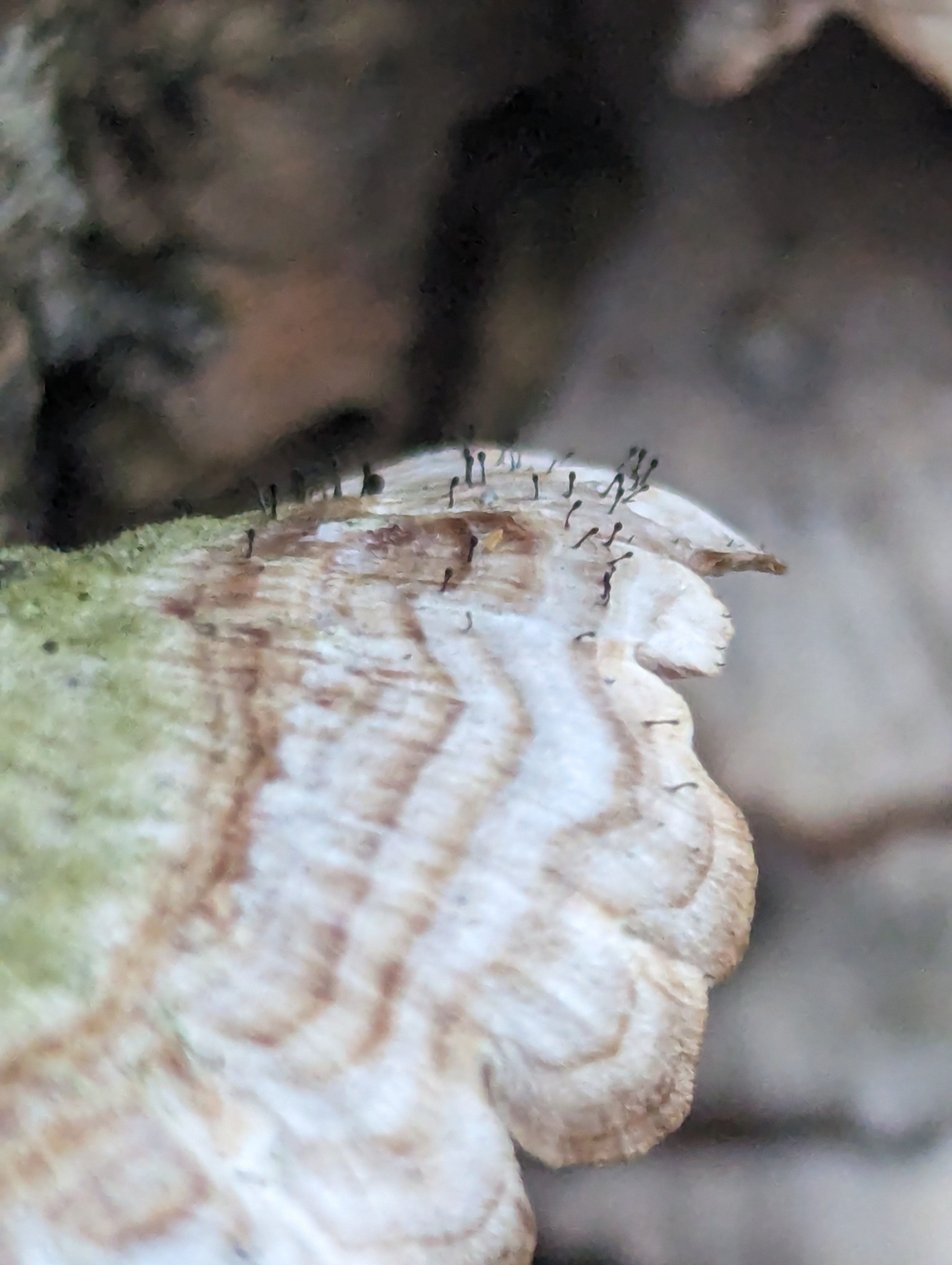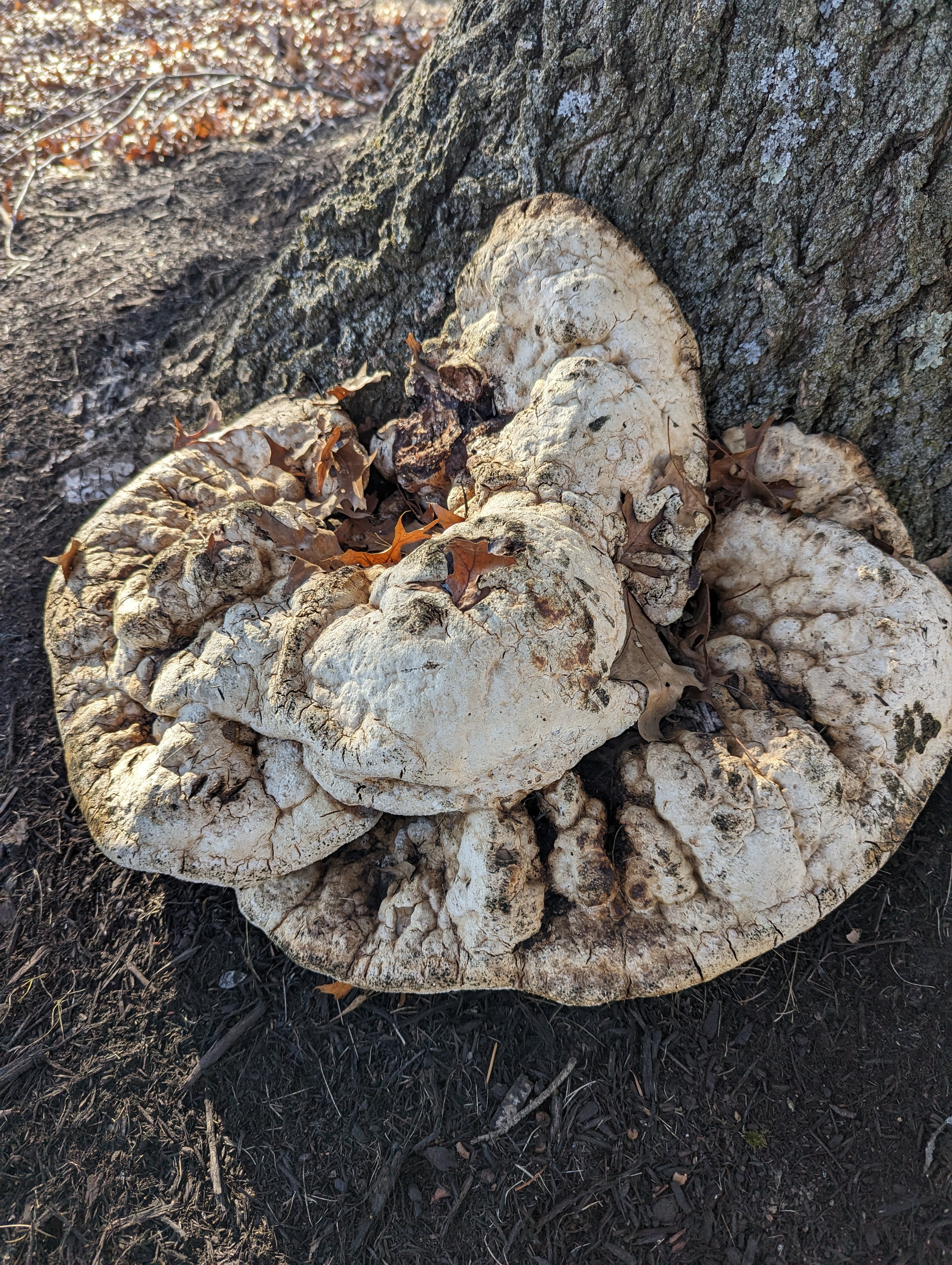Mycophobic nonsense.
vinter
I see no more need to announce I don't believe in the Christian god than there I see need to announce I don't believe in Zeus. Both questions are completely irrelevant to my life
Good question - I don't think they're damaging to the host, but it is hard to find good info
You'll have more luck checking Trichaptum - I've never found them on Trametes yet. There's also a similar looking species, Gliocladium polyporicola, which grows on Stereum hirsutum, so may as well check all the small shelf fungi!
Tolypocladium sp, which grow from an inedible Elaphomyces truffle
Clathrus columnatus perhaps? Def one of the stinkhorns
Nice to see the real thing! Lots of people recently down south here in the states posting Verbesina and similar "frost flowers" producing plants during the freeze
Nice! They're fun to toss in soups or make gummies
Pezizales, at least haha Ascomycetes, especially cups, terrify me. There are so many that look macroscopically identical
Check Apioperdon pyriforme 🍄
Pleurotus sp, aka oysters. Spore print won't really help here, most things that look like this are white-spored or near. Think of spore prints as a way to occasionally rule out something else, not mandatory for a positive ID
Why are there so many "webcomics" that look exactly like this? AI generated?


They also said Cantharellus only grow on trees in their print issue, likely AI generated text. Their last video on fungi was full of errors as well. They have really gone downhill